|
Coming from a background in the visual arts, I’ve always liked the idea of working with text and image, but it has taken me some time for me to think about what relationship between these two forms of communication would most powerfully give voice to what I care about. To better ground myself in the world, including the world of prose and ideas, I took a break from my visual art practice altogether. Some years later, I found myself working at an institution, Goddard College, that fully embraced an interdisciplinary approach to artistic inquiry. After a year of experimenting and searching at Goddard, I realized the way into developing a practice based on text and image has been around a long time: the way was through zine-making. First, putting text in relation with images is something that inevitably happens, even within a strict visual arts practice. Inevitably, the artist has to contextualize it with words in order to be taken seriously, and, if it is being shown, someone is going to talk or write about it eventually. Some artists may shun text for the way it delimits an image, but it is inescapable. My reason for moving towards a practice that integrates text and image, with an increasing emphasis on the former, is precisely because I want it to be somewhat delimited. Of course, I don’t want to be didactic, but instead of offering a wide channel for interpretation, I want to offer a deep channel -- breadth and depth, ideally, but if I have to choose, I choose depth. I want to make work that is moving, critical, and thought-provoking. But I want to make work that is clear and sure of itself such that it cannot be appropriated by those who would wish to reduce it to milquetoast. Even more, I want to create art that gives history and agency to those who are the makers of history: the working classes. Those are the abstract formal reasons for my turn to text, but the political nature of my subject matter naturally inserted itself into the history of zine-making, or, more broadly, the making of pamphlets and leaflets. Zines, while mostly known today for their association with the riot grrrl subculture, are part of a wider history of self-publication, harking back to political pamphlets and leaflets. Within the United States, one of the most well-known political pamphlets is Thomas Paine’s Common Sense, which made a popular and forceful argument for the independence of the United States from Great Britain. Common Sense was read and distributed widely; it found audiences everywhere from drawing rooms to taverns, its words heightening the zeal for self-determination and freedom. Surpassing the influence and fame of Paine’s Common Sense is arguably The Communist Manifesto by Karl Marx. In February 1848, The Communist Manifesto began as a 23-page pamphlet published by the Workers' Educational Association: this manifesto became the seed of not only one revolution but many and continues to be read in revolutionary movements to this day. Fast forward, Zines and zine culture, like the political pamphlets and leaflets that came before them, continued the tradition of printing dissident ideas and voices. However, unlike the two aforementioned political texts, the zine cultures that arose in the 70s, 80s, and 90s that are most familiar to us today were less interested in mass distribution and appeal than they were in cultivating subcultures in which individuals with identities and politics repressed by or adversarial to those of the mainstream could find reprieve through self-expression. The zines coming out of what was labeled the riot grrrl subculture, for instance, appealed largely to third wave feminist sensibilities by emphasizing the diverse, individual experiences of sexism. As Stephen Duncombe, Professor of Media, Culture and Communications at NYU and author of Notes from the Underground: Zines and the Politics of Alternative Culture, writes “Zines put a slight twist on the idea that the personal is political. They approach political issues from the state to the bedroom, but they refract all these issues through the eyes and experiences of the individual creating the zine.” Rather than political manifestos aimed at fomenting a societal revolution, zines coming out of the subcultures such as riot grrrl often used their medium to instead create intimate communities of support and resistance. One of the first zines I picked up as a teen hanging around at punk shows was Support by Cindy Crabb and Doris Zine. The zine is composed of a collection of written and collected pieces of advice on supporting survivors of sexual abuse and preventing sexual violence. It has helped me understand both myself and others. It has also taught me how to become a better listener and friend -- again, to both myself and others. It was written to be an invaluable healing tool. It was not written to analyze the long history and structure of patriarchy in an attempt to outline how it may be overthrown. A simple wikipedia search on zines will highlight their connection to riot grrrl and a few other subcultures, but less known is the frequency with which zines were used to protest the conditions of work under capitalism, made worse by the shrinking of the welfare state and the rise of neoliberal, pro-market politics beginning in the 70s. As a wage slave educated in Marx’s political economy who entered the labor market in the midst of the 2008 financial crisis, I knew that the increasing sense of impoverishment and alienation I experienced was shared by many and part of paradigmatic shift in capitalist development that was leading us all towards a more precarious future for ourselves and our planet. I also knew this had to inform the content and form of my renewed artistic practice. I had already started my serial book project, Metamorphic: The Transformation of Work in Granite Town, to be released chapter by chapter as zines, before I knew about such gems as Dishwasher Pete, Welcome to the World of Insurance, Temp Slave, and ExtraTuf, all of which offered varying acrimonious and cathartic critiques of work and the work ethic. It was the Stephen Dumcombe’s Notes from the Underground that introduced me to the world of zines about work. According to Duncombe, the zine was really the perfect medium to channel the frustrated creative and intellectual energies of workers disillusioned with their job and the American Dream of upward social mobility. “In zines, writers present the real story of the work they do,” writes Duncombe, “...cutting through the crap...about the bright future in the high-tech age.” Zines, being self-published and easy to produce, offer space to dissenting voices who may otherwise find themselves censored or dismissed by mainstream media outlets charged with upholding the ideology of the work ethic. With wages stagnating, worker power in the form of unions diminishing, and the constant deskilling of labor through technical and organizational innovations, zine writers feel there is no “dignity of work” to preserve. But instead of grieving their low-pay and lack of power at work, many zine writers mock the hypocrisy of the social and economic relations at work. In a labor market where the company and the boss expect their workers to give their all but offer little in return by means of security, benefits, and wages, a mocking, apathetic, or hostile reaction is not surprising. A brilliant example of cynical humor illustrating this attitude shows up in a column titled “Problems and Solutions” in Dishwasher Pete: “PROBLEM: You’ve been breaking a lot of dishes at work” “SOLUTION: What’s the problem?” That said, zine writers are not against work in the abstract; contra to the DIY aesthetic present in many zines which can sometimes give them an “unpolished” look, creating zines requires a lot of intense focus and work. Unlike the day jobs that become the subject of many zine writers derision, zine creation is an act of unalienated labor that is enriches the heart and mind and is therefore relished. However, compared to more traditional hobbies, zines self-consciously emerge from adversarial conditions. An interview with Pinto editors Sara Lorimer and Paul Schuster clearly makes this connection: “Sara: You know I’d never thought about doing a zine until I started working at that awful record store. There’s gotta be some sort of connection there -- between that being such a stifling place and needing an outlet for creativity. Paul: Yeah, maybe it’s a reaction to the shitty working environment we were all subjected to…” Zine writers, whether or not they were writing about work, are carving out their own “little world, in which [they] can experience the revolutionary pleasure of thinking for [one]self”, writes Mickey Z, creator of Flaming Crescent zine. When I started my book project and decided to release each chapter as a zine, I also wanted to make space for the complicated -- and sometimes angry -- thoughts and feelings we all have about our jobs but must bury in order to appear as functional workers and citizens in a capitalist society. But I also wanted to connect these feelings to the why: Why are so many workers feeling angry and alienated at work? Why is social mobility decreasing and inequality increasing? I’ve read plenty of explanations from mainstream economists, from Thomas Friedman to Robert Reich, and while they may at times make valid points, their structural analysis falls short -- mainly due to their incomplete understanding of how value is created -- when compared to the master of political economy, Karl Marx. More importantly, Marx developed his theory on the basis of those very questions, as Terry Eagleton writing for the Chronicle of Higher Education has pointed out: “There is a sense in which the whole of Marx's writing boils down to several embarrassing questions: Why is it that the capitalist West has accumulated more resources than human history has ever witnessed, yet appears powerless to overcome poverty, starvation, exploitation, and inequality? What are the mechanisms by which affluence for a minority seems to breed hardship and indignity for the many? Why does private wealth seem to go hand in hand with public squalor?...” I’ve read through Capital and other works by Marx by myself and with others. And, as much as I personally loved reading almost a thousand pages critiquing capitalism, I know that we first experience capitalism in a very personal way. We need to awaken both the heart and the mind. But while we may first enter the realm of the political through our own experiences, through our heart, we will never move beyond individual transformation if we don’t connect it to a larger analysis. It is with a unifying theory that the personal becomes political. So here I am, releasing my first series of zines. Of course, I could just as easily write a series of blog posts, like this, which shares the spirit of the DIY confessional with zines. In fact, many have said that with blogging, the zine is irrelevant in this day and age. And yet, I couldn’t disagree more. Aside from the rich history of zine making, printed books and zines are more intimate; they can be touched; they take up space. A blog is at once everywhere and nowhere. It is easier to curl up with a zine and let oneself open up to it like an old friend. On paper, there aren’t the distractions of dozens of open tabs and apps. Not to mention, my inner teenage punk is totally excited about this -- and I hope you are all too. For all that, while this project is will situated in the history of zines, I also hope to go beyond my own “little world” of autonomous thought and, instead, create many, connected worlds for free thought through the collection of oral histories from workers located in Barre, VT, which will constitute one of the chapters of my book and a zine issue. I’ve chosen Barre not only because it has shaped the place where I currently live but because it has a unique, radical history of class consciousness and organization with the aim of creating a freer world. They have questioned the very notion of a world where the many had to work so hard to live no matter how much wealth they produced for others. They knew that justice did not equal just having a job but having control over that job; and, more importantly, having free time to do all the unwaged caring, learning, and loving that are necessary for living as a human being. Through original illustrations, collected interviews, and personal meditations at the intersection of geology, political economy, and psychology, Metamorphic will make the personal political.
0 Comments
The following is a selection from Metamorphic: The Transformation of Work in Granite Town, Chapter 1 "Everywhere and Anywhere". The entire chapter has been released as a zine issue, which you can order from me by contacting me. The zine is a suggested $1-2 donation plus shipping.Metamorphic rocks have resided in different geological settings in their journey of becoming what they are. They become their own unique hybrids of the places they’ve lived. They record more than a journey; they record change. Not all rocks are metamorphic -- granite is not a metamorphic rock -- but all kinds of rocks can become one. “All science would be superfluous if the outward appearance and the essence of things directly coincided.” - Karl Marx The empty shops, boarded up houses, and smokestacks of Binghamton and Baldwinsville, New York -- most of them silent and statuesque in their new function as memorials of another time -- impressed my childhood mind as enigmas. At one time, they contained and supported lives. Why didn’t they anymore? I’d take long, clandestine bike rides out to them, get close to their facades, daring them with my gaze to reveal the calamities they contained; I intuited the present dangers of drugs and violence that grew in their darkness to be natural extensions of the troubles that led to their current state of dereliction. But I never went in. I never uncovered their particular histories. My grandparents used to work behind some of those factory walls. Through their toil, they fed and housed a family, but the work also gave them much pain, which was made known through frequent complaints of achy hands, backs, and feet from standing on concrete floors all day, making the same motions over and over in sync with the machines. But much of their interior lives and feelings were hidden behind a wall of stoicism. In school, I was taught that we are on a one-way journey called progress. The strained optimism of my parents tried to validate this claim. When I found my mom crying late one night after she finished her shift at Burger King, the only job she could find at the time when our family desperately needed the extra money, the idea of progress became a prevarication that sank into the pit of my stomach. I knew a little about how it must have hurt because of the cruel assumptions my peers made about her and, by extension, me -- namely, that we were struggling because we deserved to be. My mother is bright. She won awards for her mathematical abilities in school, but she did not have the privilege of a college education. From then on, I learned to see the contradictions in everything. When I ended up in Central Vermont eighteen years later, the neat towns nestled in between the mountains appeared as if they magically arose sui generis without the powerful force of industry. After almost six months of unemployment I found myself working as a VISTA - a Volunteer In Service To America. Vermont’s Twin Cities, Montpelier and Barre, became my home. I lived most of my life in cities where people always outnumber animals, and perhaps that was true of these small towns as well, but it certainly didn’t look like it. Montpelier was the state’s capital, at least, giving it importance by default. Barre was much more mysterious and obscure. Up and down main street, you find the standard small town America offerings alongside a smattering of creative outlets and stores that have somehow withstood the test of time: a gas station every several blocks, a dollar general, a couple convenience stores, a mechanic’s shop, car parts stores, hardware stores, a diner, and a couple of nicer restaurants and shops that probably mainly serve folks from out of town, cooperative artist’s studios and a gallery, a shop for shoe repairs, and a shop for sewing services. Just driving through Barre, you wouldn’t think there is this big hole in the ground nearby that birthed some of the most revered buildings and monuments in history, some of them sitting in Washington, DC: the Smithsonian Institution, Union Station, and the General William Tecumseh Sherman Memorial which is right next to the White House. Or that its granite can be found on almost every battlefield and national cemetery in the nation. Or that it once churned out an enormous amount of money and profits -- enough to make this town into a capital of industry, the Granite Capital of the World. Such auspiciousness drew people from the other side of the ocean, predominantly Italy, Scotland, and Spain. The cost of this outward progress was paid in flesh: the quarry owners swallowed young men whole in their pits and sheds. Widowed wives had to hustle to keep their families alive, running shops and restaurants (sometimes out of their own homes), taking in boarders, furtively making grappa and spirits for the wealthier clientele coming in from neighboring Montpelier, bearing the death of their husbands in the constrained silence of hard labor. There are hints of this history, even on Main Street: a restaurant named “The Quarry” and a statue of an Italian stone carver dedicated to all the workers in the industry. The statute reads as a memorial, but the granite industry is not wholly dead in this town. The traffic whirs by with threatening speed -- commuters travelling between the twin cities, not heading to the quarry or manufacturing plant. I go against traffic towards Graniteville, where Rock of Ages -- now owned by the Canadian company Polycor, Inc, which owns 32 quarries across the North America -- still operates a memorial manufacturing plant and a quarry. Idling at a traffic light, a man holds a cardboard sign that reads “Homeless, need help until SSDI comes in. Every bit helps.” A large, black crow gallantly flies ten feet above me, carrying a large stick in its beak. She or he -- in the society of crows, there aren’t rigidly defined gender roles when it comes to homemaking -- is trying to build a home in which to raise the next generation. Half a mile further down the road, a couple of construction cranes are at work fixing power lines near a subdivision of homes. For us, nesting season never ends. I continue driving. The sky has been relentlessly gray today. Gray skies have a way of quieting everything around you. Nature pulls a blanket of clouds over us and asks us to rest. But, of course, we cannot. We need to make things, make money, make nests. The crow must do this, must live day by day, but even with all of the extra stuff we make, all this surplus, most of us also live this way. There are only a few branches on the road around us, but, sequestered away in the woods there are a countless number of them. Away from the town, ensconced in a congregation of trees stands a large generic-looking modular building, the Rock of Ages manufacturing plant. The Visiting Center, with its stylish modern-looking architecture of sweeping geometric shapes that are slightly distorted for a postmodern yet conservative effect, contrasts with the factory, which is like any other in its extreme efficiency of form. Tourism and work. Luxury and functionalism. Consumption and production. Today, I am the tourist, the consumer. Tomorrow, I will work and produce -- not here, but as a secretary of sorts at a small college. I walk up to the Visiting Center first and see through the windows that it’s very dark inside. I give the doors a try. They are locked. No signage, hours, or writing is present on the door. Perhaps I have the wrong entrance? Walking around its circular structure, I step off of the portico made, of course, of granite and onto the green-brown earth that sucks me into its wet body. Another door and a little sidewalk tell me this is the main entrance. It is also locked, but there is a sign this time reading “The Visiting Center will be open starting May 15. All other visitors are welcome to go to the self-guided factory tour next door.” So that is where I go. An effective sign. The self-guided tour entrance opens into a small lobby with a video on a loop displayed on a mounted flatscreen TV. Old and new advertisements for Rock of Ages graves, or “memorials”, flank the TV on both sides. In the video, a couple talks to me in terms of “we”. The man and the woman are white, in their 60s, wealthy as indicated by their dress and the fact that they are shopping for grand, ostentatious mausoleums. The mausoleums reach for the grandiosity of the Parthenon, for the height of Greek architecture. They are proud, exuberant -- but lest one think their sumptuous taste be an unflattering sign of egotism, the couple looks at me from the screen and says, “We want a beautiful place for our children to remember us in.” The couple gets a form of immortality -- guaranteed by the Rock of Ages Certificate of Craftsmanship -- and the next generation gets a memory, a heritage, a sense of pride. Leaving the lobby, I walk up a flight of stairs to the observation deck where I will be able to see the entire factory floor from above. Here I was met again with the monotonous buzzing which I noticed when I was outside but almost forgot in the quiet lobby with the nice couple endlessly shopping for their memorial. In the video, the couple went to the factory floor, too, showing a subdued admiration for the quality and skillfulness of the machines and workers. I carried that feeling in with me when I walked up to the observation deck. But for the first several minutes, all I could do was stand stunned. It was the grinding and droning, the tickling of dust in my nostrils, the smells of wood and oil -- of industry acting on the senses. A wall of pictures, text, and a diagram told me what was going on before me through faded paper and frames than hung crooked and tired on the wall. Over 200,000 square feet spread out below me, crowded with stones, mammoth ventilation systems, little metal sheds with computer terminals, columns laid on the floor for mausoleums, modest headstones ready for shipment with paperwork strewn across them. In the right-hand corner closest to the observation deck is an area that resembles an artist’s studio and, indeed, this is where the few remaining carvers work. Naturally, Rock of Ages wants its visitors to see this area the most clearly. Tucked away far from the purview of the tourist, the slow back a forth motion of a machine above a steel bed tells of an automatic polishing machine. Customers want to see that care -- that a human touch -- is involved in this most solemn of purchases. We want some distance between ourselves and the machines, because it is becoming clearer and clearer with every innovation that they, and not our children, are the future.
Hello! Thanks for stopping by. This is an informal place for some of my writings, reflections, photos, and illustrations, etc.
|
AuthorI am an interdisciplinary artist who brings together images, narratives, and social theory to reveal the lived and imagined systems that construct our lives. Archives
September 2019
Categories
All
|
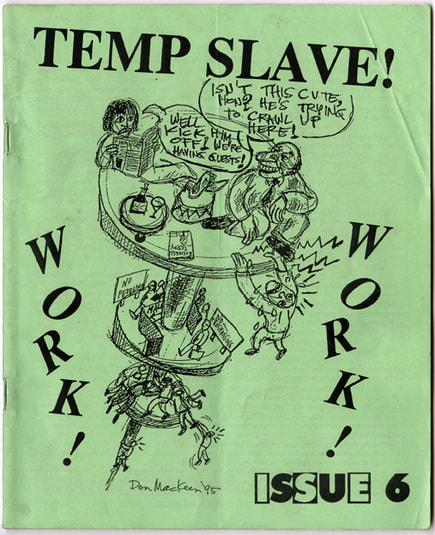
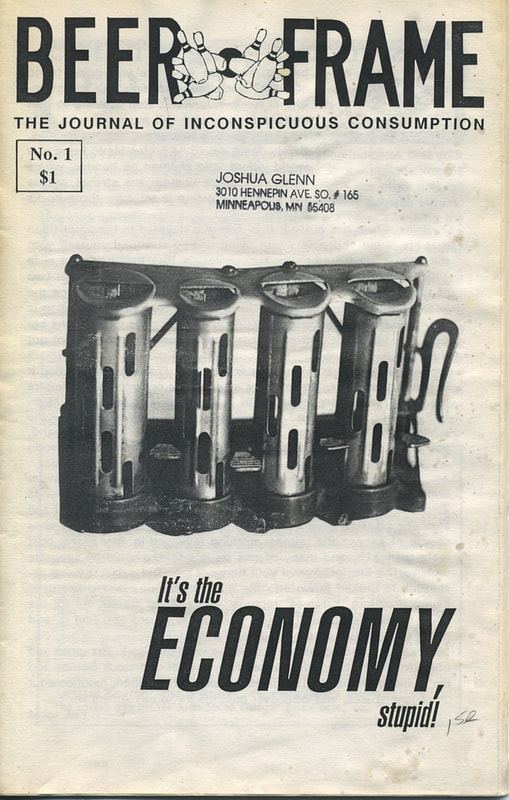
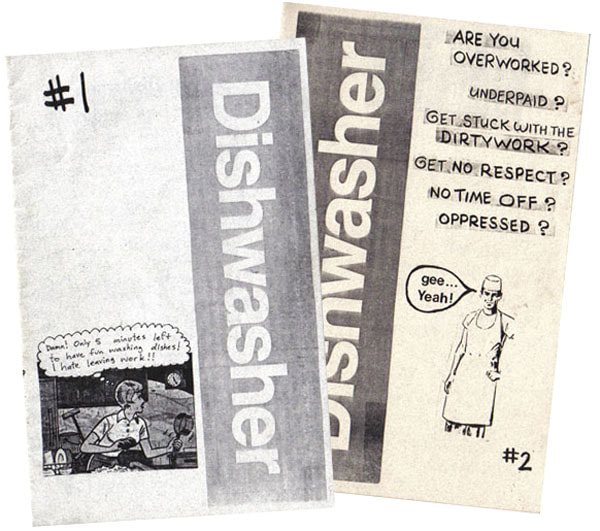
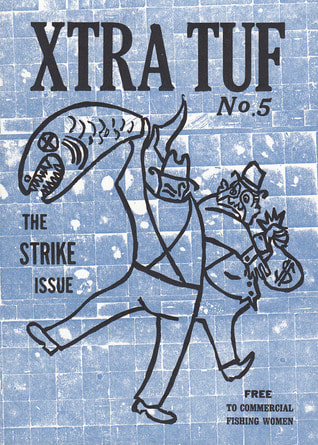
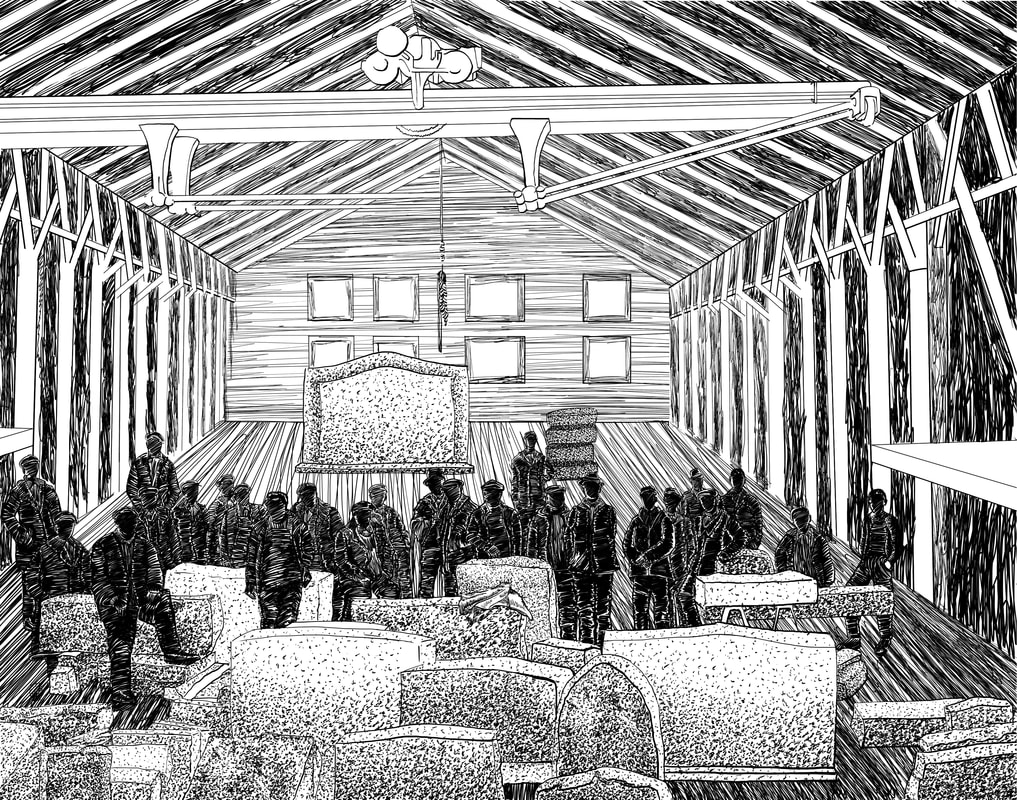
 RSS Feed
RSS Feed
